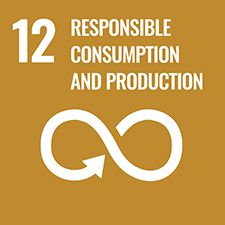
Factors Affecting Business Performance of Insurance Enterprises in Vietnam
31 Jan, 2024
In 2020, in the context of the 4.0 Industrial Revolution and the complicated Covid-19 epidemic, businesses in Vietnam in general and businesses in the insurance sector in particular are facing many profound changes. In this research article, the author will focus on understanding and evaluate the factors affecting the business performance of insurance enterprises in accordance with the research data collected from the business results of 10 businesses in 2020.

Concept of insurance business
Insurance is a means of protection against financial loss. This is a form of risk management, primarily used to hedge against the risk of potential or uncertain loss. Insurance business is a business of risk, sharing losses with customers, insurance products as services that are specific, unique, abstract but very specific and more realistic than all other products on the market once the terms of the insurance contract are implemented promptly and effectively.
\A contract of insurance is a commitment by one party or the insurer to pay a premium or assessment to another party, the policyholder or a third party, if an event is the subject of a risk occurs. It is often defined as a contract of indemnification. The insured person is not entitled to profit from the insurance but only compensated to the extent of monetary loss. Currently, to drive the adoption of AI systems and to realize these benefits, the insurers need to earn customer trust by applying new technology responsibly. AI can also help insurers enhance their role in mitigating, minimizing and preventing risks.
Researches on factors affecting insurance business activities in Vietnam
*The previous studies
In the process of researching and studying practical documents related to the topic of factors affecting the efficiency of insurance business operations in Vietnam, the author found various in-depth documents in this field abroad and domestically, a number of quality documents are referenced, typically as follows:
A typical recent domestic research overview is the topic of Nguyen Le Cuong and Nguyen Phuong Anh (2020) with the topic “Factors affecting business performance: Practices of Vietnamese securities companies”. Among the 7 factors included in the model, 5 factors have an impact on the business performance of securities companies. Specifically: The scale factor (SIZE) and the revenue growth rate factor (GROWTH) have a positive relationship with the business performance of securities companies; The remaining capital structure variable (CS), long-term assets to total assets ratio variable (TANG) and cost to operating income ratio variable (COI) have a negative relationship with business performance of the securities companies.
The research by Gene C. Lai, Lin-Yhi Chou and Lih Ru Chen (2015) with the topic “The Impact of Organizational and Business Strategy on Performance and Risk in the Insurance Industry” examined the impact of organizational structure and business strategy on firm performance, profitability, and risk-taking behavior in the Taiwanese life insurance industry. The results indicate that organizational structure and business strategy have a significant impact on efficiency, profitability and risk-taking behavior. In addition, business size, industry, leverage ratio and market share have a significant impact on efficiency, profitability and risk-taking behavior. The overall evidence of the study suggests that a more competitive environment should be encouraged in the Taiwan insurance industry to enhance insurer efficiency.
The research with the topic “Impact of Internal (Micro) And External (Macro) Factors on Profitability of Insurance companies” are conducted by two authors Anum Rashid and Muhammad Usman Kemal (2018). The findings of the study elucidate that Gross Premium, Administrative Expenses, Size and Interest Rates have a significant impact on the profitability of insurance companies. The results demonstrate that the losses incurred by life insurance companies, emphasizing the need for separate and actuarial departments to properly underwrite policies.
In another study by Kokab Shawar and Danish Ahmed Siddiqui (2019) with the topic “Factors Affecting Financial Performance of Insurance Industry in Pakistan”, the results present that the total written insurance premium has a significant impact on all three measures of insurance viability profitability. The larger size of the company has a negative impact on revenue and investment returns. Additionally, claims, reinsurance, GDP, interest rates, and administrative expenses have insignificant relationships with all three profitability measures. Therefore, the study concludes that: to improve the operational and financial performance of the insurance industry in Pakistan, there is a need to focus more on factors that can increase insurance premiums.
*Research model development
In accordance with the previous research by Nguyen Le Cuong and Nguyen Phuong Anh (2020), Lai et al. (2015), Anum Rashid & Muhammad Usman Kemal (2018), Kokab Shawar & Danish Ahmed Siddiqui (2019), the author conducted to establish a research model for the topic of factors affecting the performance of insurance businesses in Vietnam, specifically the research model as presented as follows:
The main purpose of the study is to identify and to focus on evaluating the factors affecting the business performance of insurance enterprises in Vietnam. To analyze this impact, the author tracks the simultaneous relationship between the factors Market price-to-income index, Net revenue growth, Pre-tax profit growth, Average customer collection time and Enterprise size on business performance of insurance enterprises. The research method of the project uses quantitative methods in accordance with the multiple regression analysis. Data was collected through financial reports of 10 businesses in the insurance sector.
Conclusions and recommended solutions
In accordance with the research results, the author concludes that 3 factors affecting the business performance of insurance businesses in Vietnam are: Market price-to-income index, Collection time average customers and Business size. In addition, Enterprise scale factor has the strongest impact, followed by Market price-to-income index and Average customer collection time factor with a lighter impact.
Therefore, this research helps managers and policymakers promote the growth and operational efficiency of the insurance sector, especially insurance businesses. In accordance with the research results, businesses operating insurance business in Vietnam should increase their business scale and have business expansion strategies suitable to the potential of the insurance market in Vietnam. In addition, with negative results, insurance businesses need to pay attention to have reasonable policies in reducing the average customer collection time. Besides promoting internal resources, insurance businesses need to cooperate with each other in various aspects. Through the Insurance Association, members can have positive impacts to expand and orient the market, maintain healthy competition, combat insurance fraud and so on, creating favorable development conditions for entire industry. Not only strengthening domestic cooperation, Vietnamese insurance companies must also promote international cooperation.
Author: Nguyễn Hoàng Nam – Master Program learner, Faculty of Laws, University ò Economics Ho Chi Minh City (UEH).
This is an article in the series of articles spreading research and applied knowledge from UEH with the “Research Contribution For All – Nghiên Cứu Vì Cộng Đồng” message, UEH cordially invites dear readers to look forward to the upcoming Knowledge Newsletter ECONOMY No. #108
News & photos: Author, UEH Department of Marketing & Communication



![[Contribution Research] How Ho Chi Minh City students’ green product consumption is affected by application iCTs innovation nowadays: A case for business to enhance green product consumption by understanding the role of environmental concerns, green consumption value and perceived effectiveness](/images/upload/thumbnail/ueh-thumbnail-639044087939815424.png)



![[Research Contribution] Determinants impacting young consumers purchasing behavioral intention on sustainable fashion: exploration in Ho Chi Minh City](/images/upload/thumbnail/ueh-thumbnail-639035712273480983.png)





![[Research Contribution] What influences UEH students’ attitudes toward the “UEH Zero Waste Campus” project](/images/upload/thumbnail/ueh-thumbnail-639033816949877456.png)